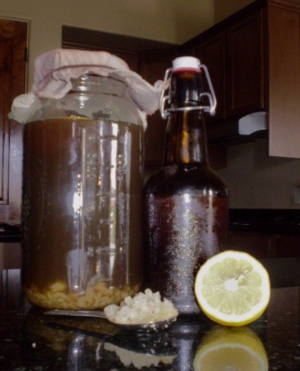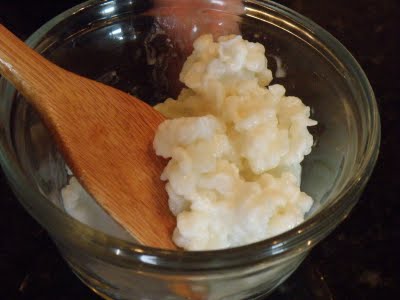Water Kefir: A Fun and Fizzy Soda Alternative
 Looking for an alternative to soda and sugar-laden fruit juices? Hoping to find something your kids will enjoy? Fermented beverages offer taste, fizz, and fun in a variety of flavors and forms!
Looking for an alternative to soda and sugar-laden fruit juices? Hoping to find something your kids will enjoy? Fermented beverages offer taste, fizz, and fun in a variety of flavors and forms!
Fermented beverages include dairy kefir, kombucha, beet kvass, and water kefir. The water kefir recipe below can be adapted to suit your tastes and preferences.
Water kefir requires three basic ingredients: Starter, sugar, and water. Don't worry if sugar is not part of your daily diet. The sugar is "eaten" by the grains or starter, and the drink is transformed into a probiotic boost to your immune system.
Ingredients:
- Starter. This can be in the form of water kefir grains (small gelatinous masses of beneficial bacteria and yeasts) which multiply and provide kefir indefinitely, or starter packets which eventually must be replaced.
Health Benefits of Lacto-Fermented Foods
To understand the virtue of lacto-fermented foods, it's important to understand the digestive process itself. Two things happen when we eat. First, ingested foods are broken down. Second, nutrients are built up. If the breaking-down process is incomplete, the building up will not happen correctly.
In her book Making Sauerkraut and Pickled Vegetables at Home, Annelies Schoneck explains the role of lacto-fermented foods:
What is astonishing is that lactic acid contributes to both processes—that of decomposition and that of reconstruction. On the one hand it supplies digestive juices in the form of organic acids that help break down the foods we eat, and on the other hand it activates the metabolic processes whereby these foods are transformed into new living substances.
Health Benefits of Kefir
Hippocrates said that our food is our medicine and our medicine is our food. Nothing illustrates this more than the probiotic food kefir. Kefir is made using "grains" to ferment any kind of milk (goat, cow, coconut, etc.), incorporating their beneficial organisms to create the cultured product. The grains look like clumps of cauliflower but are actually clusters of healthy yeasts and bacteria.
Kefir is pronounced Ke-Feer', according to the dictionary, but is more commonly pronounced Kee' fir or Keff ' ir. It means "feel good" in Turkish. It is a complete protein and is high in minerals and vitamins, especially the B vitamins. Homemade kefir contains up to 35 strains of good bacteria and yeast (as opposed to yogurt, which contains a handful). Bottled kefir purchased at the store may contain up to 10 strains, but often includes unwanted additives. Kefir, therefore, is best when it's homemade.
How to Make Dairy Kefir
Dairy kefir is simple to make, provided you have healthy grains. Kefir grains (pictured below, and described in our Health Benefits of Kefir article) may be obtained through friends or fellow co-op members, or through the Internet. Here are several online options:
- The Kefir Lady
- Yemoos Nourishing Cultures
- Cultures for Health (these are dehydrated—a little tricky, but a viable option)


